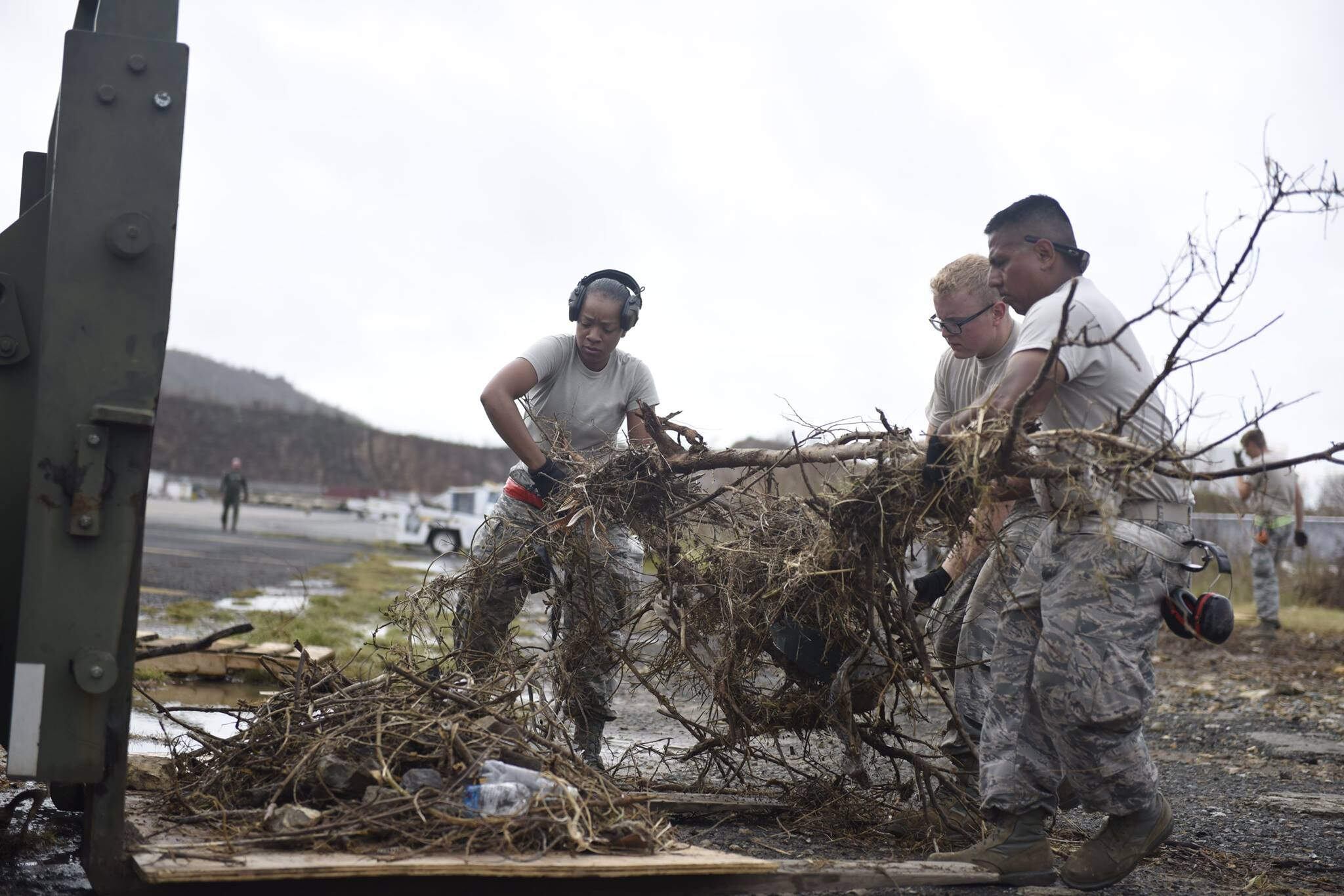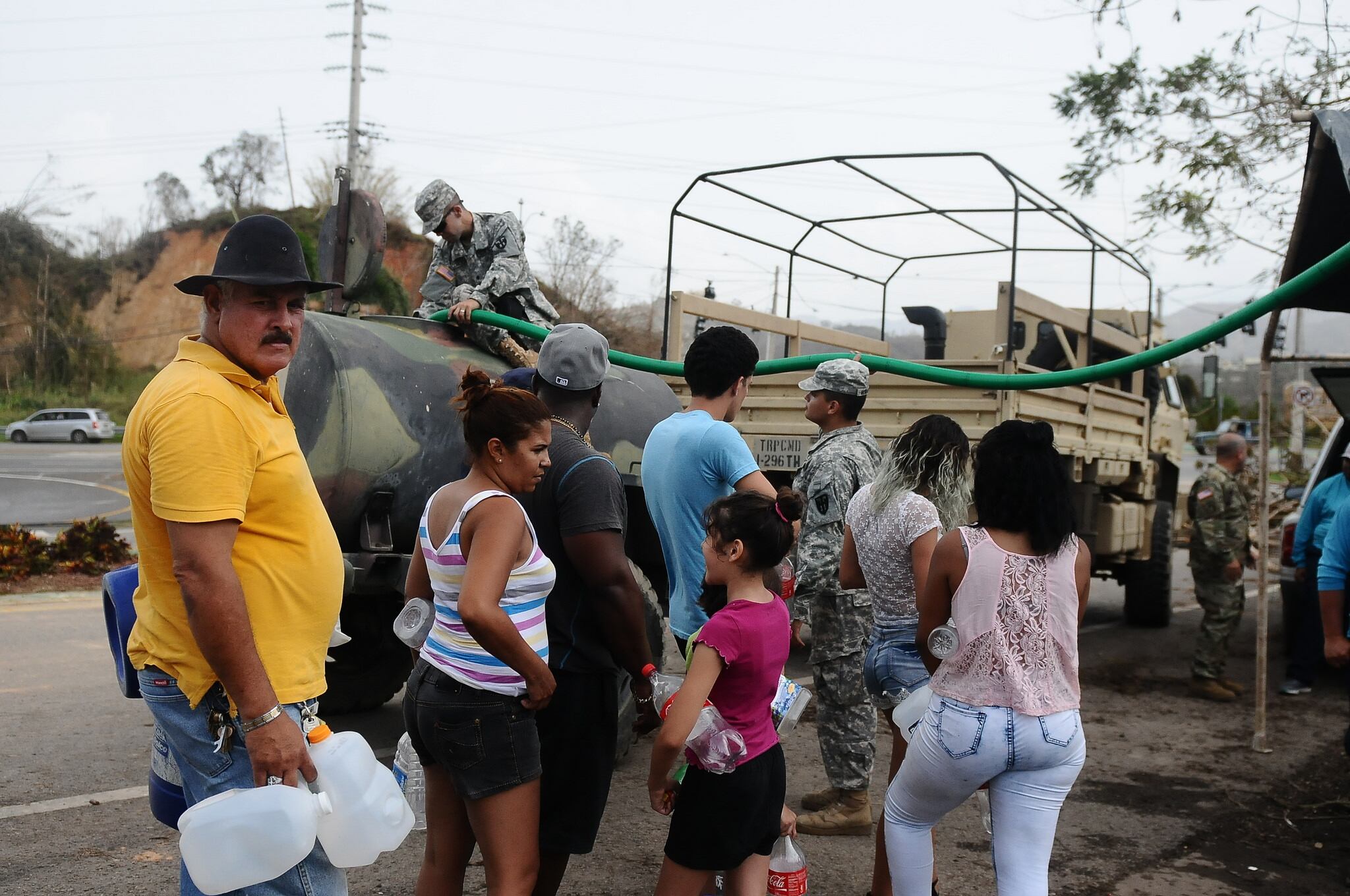The U.S. military kept up round-the-clock missions on Thursday to send aircraft, troops, food and supplies to Puerto Rico and the U.S. Virgin Islands as the devastated region struggles to recover after Hurricanes Maria and Irma slammed the islands.
Eight flights were scheduled Thursday as part of 24-hour operations to deliver food, water, medical supplies, communications support and power-generating equipment, officials with U.S. Northern Command said in a release.
The operations include search-and-rescue efforts, distribution of supplies and bringing power back up at hospitals, airports, ports and other facilities.
Brig. Gen. Rich Kim, deputy commander of U.S. Army North, arrived in Puerto Rico on Wednesday to set up a forward headquarters to manage response efforts, according to Pentagon spokesman Army Lt. Col. Jamie Davis.
NORTHCOM is deploying medical capabilities and ambulances, and U.S. Navy hospital ship USNS Comfort was expected to leave from Norfolk, Virginia, on Friday and arrive in Puerto Rico in a few days.
C-17 and C-5 cargo aircraft were arriving Thursday in Puerto Rico, laden with supplies such as an FAA generator to support radar control operations, a Coast Guard Mobile Medical unit and heavy-duty trucks.
"You have effectively a series of islands that are over 1,000 miles away from the continental United States. Your only fast method to resupply them is by air, because all the ships that you want to supply with are trying to get out of the way of that same hurricane rolling up to Florida," said Brig. Gen. Keith Wark, director of operations for the National Guard Bureau.
Since Hurricane Maria, Air Mobility Command has flown nearly 200 sorties, delivering about 1,500 short tons of critical equipment and supplies, such as fuel, communications equipment, generators, medical equipment, food and water, said Col. Patrick Ryder, an Air Force spokesman.
AMC air medical evacuation teams have moved a total of 104 patients from St Croix, including one mission on Sept. 24 that moved 34 patients. The medical team said that was the biggest mission they’ve had since during Katrina. The largest they had then was 23 patients on one flight.
The Air National Guard has also flown 213 sorties to date, delivering about 1000 short tons of cargo, and 1200 personnel, flying C-130s, KC-135s, C-17s, HH-60s, RC-26s, C-40s. Personnel include aerial port, medical personnel, and communications personnel needed to help with relief operations.
As more ports and airfields and roads open, more resources will flow, Ryder said.

The Guard’s initial task was to get airfields open so they could deploy in. One of the key combat capabilities the ANG has are special tactics squadrons that go in and open up the air field and begin to control traffic with nothing but a radio.
“We can set up that field on land with night vision goggles and start to bring in initial capability,” Wark said. They did that in St. Thomas and St. Croix within 12 hours of the storm’s passage. Then they start to do airfield assessment analysis in difficult portions down there, he said.
“It may seem the response was slow for the air, but I would tell you that’s not. We had a critical enabler, a radar system that was knocked out in San Juan, so that had to get reestablished,” Wark said. That meant they were essentially back to the 1930s or ‘40s method of trying to sequence airplanes that were 40 or 50 miles apart to be able to get in. That limited the amount of traffic each hour they could get in safely.
U.S. Marines worked on clearing routes, distributing supplies and fuel and providing helicopter support to assist U.S. officials assessing Puerto Rican hospitals.

As of Wednesday, the U.S. Army had deployed more than 4,000 soldiers and U.S. Army Corps of Engineers civilians, 15 aircraft and more than 500 trucks as part of the response and relief efforts in Puerto Rico and the Virgin Islands, Army officials said in a release.
The Puerto Rico Army National Guard was working to restore lines of communication and provide engineer support to clear routes for humanitarian assistance missions, Army officials said.
U.S Army Reserve units involved in the relief efforts on the ground, according to the Army release:
The 597th Quartermaster Company located in San Juan, Puerto Rico was providing laundry and shower support for evacuees.
The 602nd Area Support Medical Command was treating sick and injured patients in the Virgin Islands.
The 166th Regional Support Group was delivering commodities, medical supplies and fuel to distribution points in Puerto Rico.
The 448th Engineer Battalion was clearing routes in the western region of Puerto Rico.
Kathleen Curthoys is editor of Army Times. She has been an editor at Military Times for 20 years, covering issues that affect service members. She previously worked as an editor and staff writer at newspapers in Columbus, Georgia; Huntsville, Alabama; Bloomington, Indiana; Monterey, California and in Germany.
Stephen Losey is the air warfare reporter for Defense News. He previously covered leadership and personnel issues at Air Force Times, and the Pentagon, special operations and air warfare at Military.com. He has traveled to the Middle East to cover U.S. Air Force operations.





